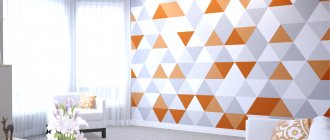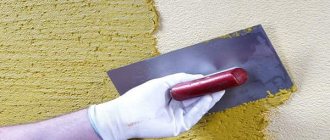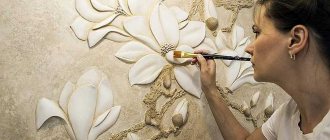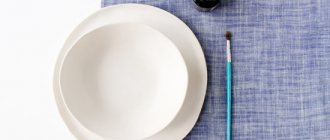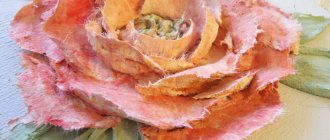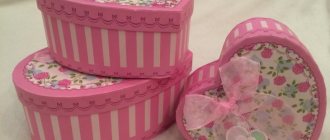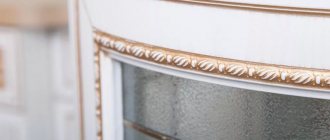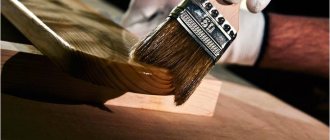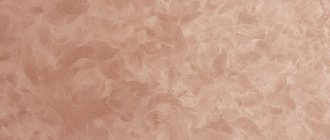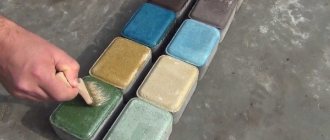Any room in the house will look more interesting if you decorate the walls with patina. Although “patina” refers to the patina that forms on copper or bronze with age, the same term has come to be used to describe any surface that becomes more beautiful over time. Patina will add style to the interior, which standard painted walls lack. For older homes or antique decor, this trim would be the perfect accent piece.
Varnish
Although working with oil paints is not easy, oil varnish dries slower and gives you plenty of time to work. Therefore, to create the effect of aged plaster, it is worth using oil paints and varnishes. But latex varnish is also suitable if you have mastered this technique well. Just remember that oil varnish cannot be mixed with latex paint and vice versa. There are clear varnishes available on the market, and you need to mix them with pigment to create the desired color.
Patina for the kitchen
Patinated kitchens do not indicate its real age. On the contrary, you can restore tables with your own hands using this technique and add some charm to the design. This is how a gold kitchen with patina will look luxurious, especially when you complement the interior with small accessories in the same style, and decorate the tables in a more contrasting solution. Use our existing photo collection for inspiration. White furniture looks very nice, and oak patina, on the contrary, will add massiveness, as required by the classics. And, remarkably, patinated facades look very expensive. The uninitiated will understand what material the furniture is actually made of only by looking inside the cabinets.
Luxurious white patinated furniture
Light kitchen furniture with patina looks very elegant and expensive
The patina applied to the hood also looks good in the loft style
Country kitchen with patina
Classic kitchen with patina on wooden furniture
Color palette
The colors of paint and varnish should go well with each other. Yellow varnish will look great over white or red paint, blue over yellow, and dark gray over light gray. If you are new to patina walls, practice first on a sheet of cardboard or plywood, choosing the result you like. This costs unnecessary paint and varnish.
If you've never tried decorative painting techniques before, the easiest way to choose a color palette is to stick to three different shades. Choose a base color and go a shade lighter for the base paint. The second color should be a shade darker than the main color.
Patination of furniture
The effect of noble antiquity is given to the furniture by a patina made using acrylic paints, the colors of which are available in a wide range. It doesn’t matter that this is artificial aging, what is important is the end result, which makes you wonder how many centuries the furniture has stood. But despite the visual shabbyness, all the facades of the interior items are carefully sanded, free of chips and varnished. If previously it was believed that the classic is applying a blue-green tint to tables, chairs and other furniture, now a color close to natural tones is used, such as gold, silver, milky, brown.
This dish dryer will fit well into a country or loft style interior
Don’t rush to throw away your old furniture; after a little work on it, it will be able to complement your interior
Aged chest of drawers in a country style bedroom
A similar aged table will decorate a room in a classic or Provence style
Technique
Once the base coat of paint is dry, cover a 1.5 m area with clear coat using a piece of gauze. Apply the first layer of colored varnish with a round varnish brush, using diagonal, criss-cross movements in a random pattern. You can also use a sea sponge for this, but do not move it crosswise, but simply touch it so that it leaves an imprint.
There will be empty spaces around the cross-shaped lines. These are the ones you need to coat with varnish of a second color, again drawing intersecting lines. Then use a dry textured brush to lightly touch the varnish and perform rotating movements. Start at one side of the wall and work your way until you reach the end.
Then blot the surface of the wall with crumpled gauze using the same rotating movements. When the fabric is saturated with varnish, replace it with another piece of gauze. Use a soft-bristled brush to soften the harsh lines left by the polish by blending two colors.
What is patina?
Patina is a thin greenish film that forms under the influence of oxygen and moisture in the air. A striking example of this can be old copper coins with a green patina from time to time, which was precisely caused by the oxidation process of the alloy. This is the so-called “natural patina” or oxide-carbonate coating formed, as mentioned above, due to the contact of oxygen with moisture.
In general, there are several types of patina - natural and artificial patina, created using special substances previously applied to the surface of wood, metal or concrete.
Today, surface patination is a very popular phenomenon, which is most evident in the manufacture of various furniture attributes. The technique of patination of wood has its advantages, since a variety of means and devices can be used to create unique and one-of-a-kind furniture products.
Means for patination
To patina furniture, various paint and varnish compositions are most often used based on:
- Acrylic;
- Bitumen;
- Stains;
- Wax;
- Oils.
In many ways, the choice of one or another means for patination of furniture depends on the final appearance of the aged surface you want to achieve. For example, a wax patina is used to obtain a pearlescent shimmer, and a stain-based patina is used to achieve the darkest shade of the surface.
When choosing a specific material for patination, it is important to consider its safety of use. It goes without saying that wax patina has an absolutely environmentally friendly composition, unlike, for example, the same patina on a bitumen basis or using acrylic.
Imitation of patina using oxidizing paints
For this method, we will need special oxidizing paints with a patina effect, primer and some kind of base that you want to turn into a vintage item. This could be, for example, a photo frame or a ceiling rosette. The base itself can be wooden, plastic or metal - the material is not too important.
First you will need to coat the base with primer to help the paint adhere better. After this, carefully paint the entire surface with gold paint and, before it has time to dry, apply a turquoise-colored oxidizing agent with a thin brush. The oxidizing agent is applied in small strokes to those areas that you want to “age.”
After some time, it will begin to appear and create exactly the patina effect that we need. Finally, the frame should be varnished. See the visual sequence of actions here.
Patina effect: technology and advantages
Patina in the interior involves applying a thin oxide-carbonate film to a previously prepared surface, which is designed not only to modify an object or wall, but also to protect it from minor damage. This technique is suitable for mirror frames or paintings, pieces of furniture, as well as for gypsum stucco molding, figurines, linkrust wallpaper and decorative plaster.
Advantages of covering walls with patina:
- the treated surface becomes more durable and is not afraid of deformation;
- the process of caring for patinated objects is simplified;
- patina coating also protects against the effects of chemical detergents;
- surfaces acquire a mysterious, status-like appearance;
- the interior becomes exclusive and unique;
- can be used in different styles (classic, country, shabby chic, Provence, retro, vintage, etc.).
As for how much money patina will cost, the cost depends on the area of the surface being treated, the technology chosen, as well as the necessary paints and chemicals. Means for creating an aging effect are selected according to the type of material to be worked with, as well as the desired result. With their use, an ordinary thing acquires a respectable, antique look, walls are transformed, furniture gets a second life.
Dream studio designers and artists are true passionate specialists who create unique, original interior designs. Do you want to keep up with the latest innovations in the field of design? Subscribe to our news and get fresh ideas! If you need additional information regarding patination or other types of decoration, please contact us, our managers will answer all your questions as soon as possible. We are always in touch and ready to help!
"Crushed" technique
If you want to patina something on a larger scale, then don’t be scared - it’s easier than it seems. An ordinary dark brown table can easily be turned into an antique one, covered with an almost real patina.
To do this, all you need is to mix paints of a suitable shade and arm yourself with crumpled paper or a towel.
Treat the entire surface and legs of the table in a “creased” style, let it dry thoroughly and - voila! - you are the owner of a real rarity. Well, almost real, shh.
Source
